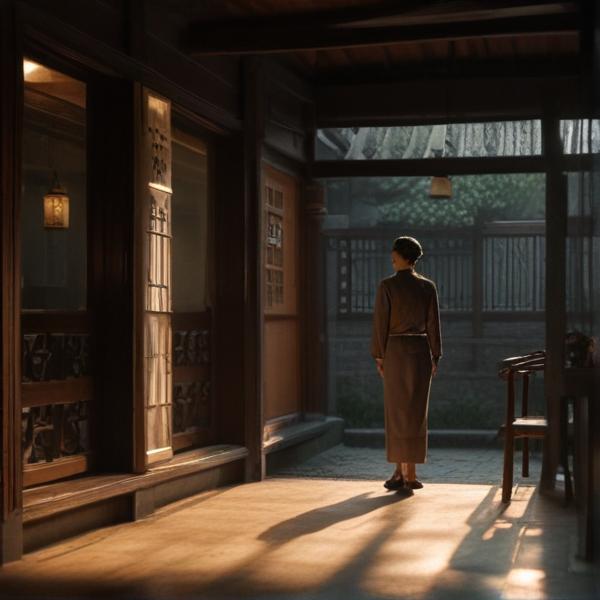基本信息 (Basic Information)
含义与用法 (Meanings & Usage)
中文核心释义 (Core Chinese Meaning): 用来映照物体的器具,如镜子。
英文核心释义 (Core English Meaning): Mirror; an object used to reflect images.
象形意义 / 为何这么写 (Pictographic Meaning / Writing Rationale)
文言文释义 (Classical Chinese Meaning)
文言文中多用于指照影的青铜镜,有时作为比喻反思、鉴别之意,但基本与现代意义相近。In Classical Chinese, it mostly referred to bronze mirrors for reflecting images and sometimes metaphorically meant reflection or discernment. Generally similar to the modern meaning.
深入学习 (In-depth Study)
字源故事 (Origin Story)
字形演变 (Character Evolution)
常用词语和例句 (Common Words & Examples)
镜子 (mirror)
她每天早上都会照镜子。
Eng: She looks in the mirror every morning.
望远镜 (telescope)
他用望远镜观察星星。
Eng: He observes stars with a telescope.
显微镜 (microscope)
科学家用显微镜研究细胞结构。
Eng: Scientists study cell structures with a microscope.
相关成语 (Related Idioms)
以铜为镜,可以正衣冠
Meaning: Using a bronze mirror to correct one's appearance (means learning by drawing lessons from things)
多语言翻译 (核心释义) (Translations (Core Meaning))
- French: miroir
- German: Spiegel
- Spanish: espejo
- Italian: specchio
- Portuguese: espelho
- Russian: зеркало
- Arabic: مرآة
- Persian: آینه
- Dutch: spiegel
- Polish: lustro
- Vietnamese: gương
- Ukrainian: дзеркало
视频学习资源 (Video Learning Resources)
通过以下链接在热门视频网站搜索 "镜" 的更多讲解:
Search for more explanations of "镜" on popular video sites:
- 在 Bilibili.com 搜索 "镜 字源 说文解字" (Search on Bilibili)
- 在 YouTube.com 搜索 "镜 character origin etymology" (Search on YouTube)
网络参考 (Web References for "镜") ()
网络内容摘要 (Web Content Summary):
-
“镜” 的核心含义: “镜”是名词,最初指能照出影像的器具,古代多用铜、铁、玉制成,用来观照自己的形象。 Core meaning of “镜”: “镜” is a noun that originally means an object (mirror) made of copper, iron, or jade in ancient times, used to reflect one’s image.
-
字形与起源: “镜”为形声字,从“金”表示与金属有关,声旁“竟”。最早的汉字形态与金属有关,代表金属制成的明亮器具。 Pictographic origin: The character is a phono-semantic compound, with “金” (metal) hinting at its material and “竟” as the sound component.
-
文化背景: 在古代,中国人以“镜”为自省和观照品德的象征,常用来比喻明辨是非、反省自身。 Cultural note: In Chinese culture, mirrors often symbolize self-reflection and discernment of right and wrong.
-
易混淆点: “镜”与“鉴”(鉴也是“镜”的古称)常有联系,但“鉴”更偏重于“审察、借鉴”的含义。 Usage note: “镜” and “鉴” are related; “鉴” emphasizes “to examine or learn from.”
-
常用词语/成语: 明镜(bright mirror, 比喻公正或清晰)、镜子(modern word for mirror)、镜像(mirror image)。成语有“以镜自照”(use a mirror to reflect on oneself)。 Common words/phrases: 明镜 (bright mirror; fairness/clarity), 镜子 (mirror), 镜像 (mirror image). Idiom: “以镜自照” (to reflect on oneself using a mirror).
镜的解释|镜的意思|汉典"镜"字的基本解释 - 漢典
镜. 鏡 jìng 〈名〉 (1) (形声。 从金,竟声。本义:照形取影的器具) (2) 同本义 [mirror;looking glass] 古镜以铜或铁铸,也有用玉的,盘状,正面磨光发亮,背面有纹饰 镜,鉴也。—— 《玉篇》 镜,景也。—— 《说文》 明镜者可以察形也。—— 《大戴礼记·保傅》 以镜考己行。
【镜,鏡】的甲骨文金文篆文字形演变含义 - 甲骨文研究网 甲骨文密码字典 在线甲骨文字典研究 - 甲骨文研究网 甲骨文密码字典 在线甲骨文字典 ...
汉字的来历和演变(說文解字 篆體字)(六書通 篆體字) 甲骨文密码【甲骨密码】【其他解读】竟,表示终极。 ... 附 白话版《说文解字》:镜,观照身影的精制铜器。 ... 汉字甲骨文破译字典》一书中,破解的古诗、竹简等古文作品收录在《新编甲骨文破译案例 ...
更多图片 (镜 More Images) ()
